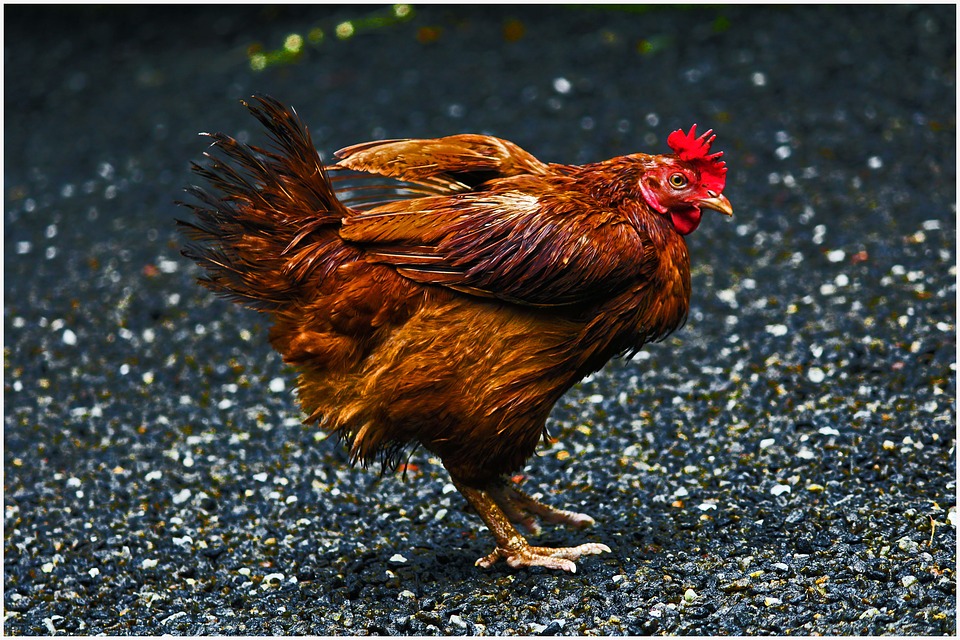
Introduction:
In the annals of culinary history, few innovations have promised as profound an impact as lab-grown meat. As the global population burgeons and the demand for meat surges, the traditional livestock industry grapples with ethical, environmental, and economic challenges. Amidst this backdrop, lab-grown chicken emerges not just as an alternative, but as a beacon for the future of sustainable dining.
The Science Behind Lab-Grown Chicken:
Cellular Beginnings: The journey of lab-grown chicken starts at the cellular level. A small sample of cells, often taken painlessly from a live chicken, serves as the foundation. These cells, particularly the satellite cells responsible for muscle growth, are then immersed in a nutrient-rich medium that mimics the natural environment inside a chicken’s body.
The Growth Environment: Bioreactors, which are essentially large steel tanks, house these cells. Within these controlled environments, cells receive a steady supply of essential nutrients like amino acids, sugars, and minerals. Over time, they multiply and differentiate, forming muscle tissues, fats, and other components that constitute meat.
Real Meat, Different Process: It’s crucial to understand that this isn’t “synthetic” or “artificial” meat. It’s real chicken meat, grown outside an animal’s body. The cellular structure, taste, and nutritional profile are identical to traditionally farmed chicken.
Leading Companies and Innovators:
Upside Foods: Formerly known as Memphis Meats, Upside Foods has been a trailblazer in the cultivated meat sector. Their commitment to producing ethical and sustainable meat has led to significant advancements in the field, with chicken being one of their flagship products.
Good Meat: A subsidiary of Eat Just, Good Meat has made headlines with its lab-grown chicken products. Their focus on taste and texture ensures that their products are not just sustainable but also gastronomically delightful.
Eat Just: Beyond its Good Meat subsidiary, Eat Just is renowned for its innovative approach to food. Their lab-grown chicken nuggets received significant attention, especially with their market introduction in Singapore.
Global Innovators: While the U.S. has been a hub for lab-grown meat innovation, companies worldwide, from Israel to Japan, are diving deep into research, each aiming to perfect the art and science of producing lab-grown chicken.
Market Introduction and Global Acceptance:
Singapore’s Green Light: In a groundbreaking move, Singapore became the first country to approve the sale of lab-grown chicken meat in 2020. Eat Just’s chicken bites made their debut in a Singaporean restaurant, marking a significant milestone in the food industry.
U.S. Market Introduction: Following rigorous testing and evaluations, lab-grown chicken has also made its way into the U.S. market. Upscale restaurants in cities like San Francisco and Washington D.C. have started incorporating these products into their menus, offering diners a taste of the future.
Consumer Reception: The initial reception has been a mix of curiosity and enthusiasm. While some consumers are drawn to the ethical and environmental benefits, others are intrigued by the novelty. Early taste tests indicate that lab-grown chicken holds its own against its traditionally farmed counterpart in terms of flavor and texture.
Global Trends: With the U.S. and Singapore leading the way, other countries are closely monitoring the progress of lab-grown meat. Regulatory bodies worldwide are evaluating the safety and potential benefits of introducing lab-grown chicken to their markets.
Regulatory Hurdles and Approvals:
The Path to Approval: Navigating the regulatory landscape for a novel product like lab-grown chicken is no small feat. Before reaching our plates, these products undergo rigorous scrutiny to ensure they meet safety and quality standards.
USDA & FDA Collaboration: In the U.S., the Department of Agriculture (USDA) and the Food and Drug Administration (FDA) have joined forces to oversee the production and labeling of lab-grown meats. While the FDA supervises cell collection and growth, the USDA takes charge of production and labeling, ensuring consumers receive accurate information.
Global Regulatory Landscape: Different countries have their own sets of challenges and criteria. For instance, in Europe, the European Food Safety Authority plays a pivotal role in assessing novel foods. As more countries show interest in lab-grown chicken, harmonizing these regulations will be crucial for global trade and acceptance.
Challenges Ahead: Despite the initial approvals, challenges persist. From defining what constitutes “meat” to addressing concerns about genetically modified organisms (GMOs), regulatory bodies have their work cut out. However, with transparent communication and rigorous science, these hurdles can be overcome.
Cost and Affordability:
The Price of Innovation: The first lab-grown burger, introduced in 2013, came with a hefty price tag of $325,000. Fast forward to today, and the costs have plummeted, but lab-grown chicken still remains pricier than its traditional counterpart.
Factors Influencing Cost: Several factors contribute to the current costs. The nutrient-rich medium that feeds the growing cells, the bioreactors, and the technology involved are significant contributors. As the industry scales and technology advances, these costs are expected to decrease.
A Future of Competitive Pricing: Industry experts predict that within a decade, lab-grown chicken could be on par with, if not cheaper than, traditionally farmed chicken. This price drop will be pivotal in making lab-grown chicken a staple in households worldwide.
Taste and Culinary Potential:
A Culinary Revolution: Lab-grown chicken isn’t just about sustainability; it’s about taste. Early adopters and culinary experts have been pleasantly surprised by the flavor profile of lab-grown chicken, with many noting its striking similarity to traditional chicken.
Versatility in the Kitchen: From fried chicken bites to gourmet dishes, lab-grown chicken offers a plethora of culinary possibilities. Its versatility ensures that it can seamlessly fit into recipes that traditionally use chicken.
Chef Collaborations: Several lab-grown meat companies are collaborating with renowned chefs to showcase the potential of their products. These collaborations aim to introduce consumers to the delicious possibilities of lab-grown chicken, from everyday meals to gourmet experiences.
Ethical and Environmental Impacts:
A New Dawn for Animal Welfare: One of the primary motivations behind lab-grown chicken is the potential to drastically reduce, if not eliminate, the need for industrial animal farming. This means fewer animals raised for slaughter, addressing numerous ethical concerns associated with animal welfare.
Eco-Friendly Meat: Traditional livestock farming is resource-intensive, consuming vast amounts of water, land, and feed. It’s also a significant contributor to greenhouse gas emissions. Lab-grown chicken offers a more sustainable alternative, with early studies suggesting it could reduce land use by up to 90% and greenhouse gas emissions by 70%.
Addressing the Carbon Footprint: While lab-grown meat promises lower emissions, it’s essential to consider the energy sources powering the production facilities. Transitioning to renewable energy sources can further enhance the environmental benefits of lab-grown chicken.
Consumer Perception and Challenges:
The Curiosity Factor: The introduction of lab-grown chicken has piqued consumer interest worldwide. While many are drawn to its ethical and environmental benefits, others are intrigued by the science and potential of this novel food source.
Overcoming the “Yuck” Factor: For some consumers, the idea of eating meat grown in a lab can be off-putting. Educating the public about the production process, safety measures, and benefits can help in normalizing lab-grown chicken and addressing any reservations.
Transparency is Key: To gain consumer trust, transparency in production, labeling, and marketing is crucial. Companies need to be open about their methods, the ingredients used, and the potential benefits of their products.
Future Prospects and Predictions:
Beyond Chicken: While chicken is at the forefront, the realm of lab-grown meat isn’t limited to poultry. Research is underway to produce beef, pork, and even seafood using similar cell-culturing techniques.
Global Expansion: As regulatory hurdles are cleared and production costs decrease, we can anticipate a broader global market introduction. From upscale restaurants to local supermarkets, lab-grown chicken might soon become a common sight.
Collaborations and Partnerships: The future will likely see more collaborations between biotech companies, chefs, and food producers. Such partnerships can drive innovation, introduce new products, and shape consumer perceptions.
Explore More on Lab-Grown Meat:
Dive deeper into the world of lab-grown meat with our comprehensive series of articles. Whether you’re curious about the science, the culinary potential, or the broader implications, we’ve got you covered:
- Lab-Grown Meat: Pros, Cons, and Potential Applications: Delve into the advantages, challenges, and diverse uses of this groundbreaking food technology.
- Zooming In: Lab-Grown Chicken: Get an in-depth look at the journey of lab-grown chicken, from its cellular beginnings to its culinary potential.
- Lab-Grown Chicken: From Cells to Supper: Explore the intricacies of producing chicken meat in a lab and its implications for the future of dining.
- Lab to Table: The Revolutionary Rise of Cultivated Meat: Chart the evolution of lab-grown meat and its transformative impact on the food industry.
Stay informed and join the conversation as we navigate the future of food, one cell at a time.
FAQ Section:
What exactly is lab-grown chicken? Lab-grown chicken, often referred to as cultivated or cell-cultured chicken, is produced by cultivating animal cells in a controlled environment. This process replicates the natural growth of muscle tissues in chickens, but without the need to raise and slaughter the birds.
How does lab-grown chicken differ from plant-based chicken alternatives? While both offer alternatives to traditional chicken, lab-grown chicken is actual meat produced from chicken cells. In contrast, plant-based alternatives are crafted from plant ingredients like soy or peas to mimic the taste and texture of chicken.
Is lab-grown chicken safe to consume? Absolutely. Lab-grown chicken undergoes stringent testing and quality control measures. Produced in sterile environments, it reduces the risk of contamination from pathogens commonly found in traditional chicken.
How does the taste of lab-grown chicken compare to traditional chicken? Initial taste tests and consumer feedback suggest that high-quality lab-grown chicken is virtually indistinguishable from its traditional counterpart in terms of taste, texture, and appearance.
What’s the environmental impact of producing lab-grown chicken? Lab-grown chicken production significantly reduces the need for land, water, and feed compared to traditional chicken farming. It also promises lower greenhouse gas emissions, positioning it as a more sustainable choice.
Conclusion:
The rise of lab-grown chicken marks a pivotal moment in the culinary world. As we stand at the crossroads of tradition and innovation, it’s evident that lab-grown chicken isn’t just a fleeting trend but a testament to human ingenuity and our commitment to a sustainable future. As technology advances and perceptions shift, lab-grown chicken might not just be an alternative but could become the new norm.










